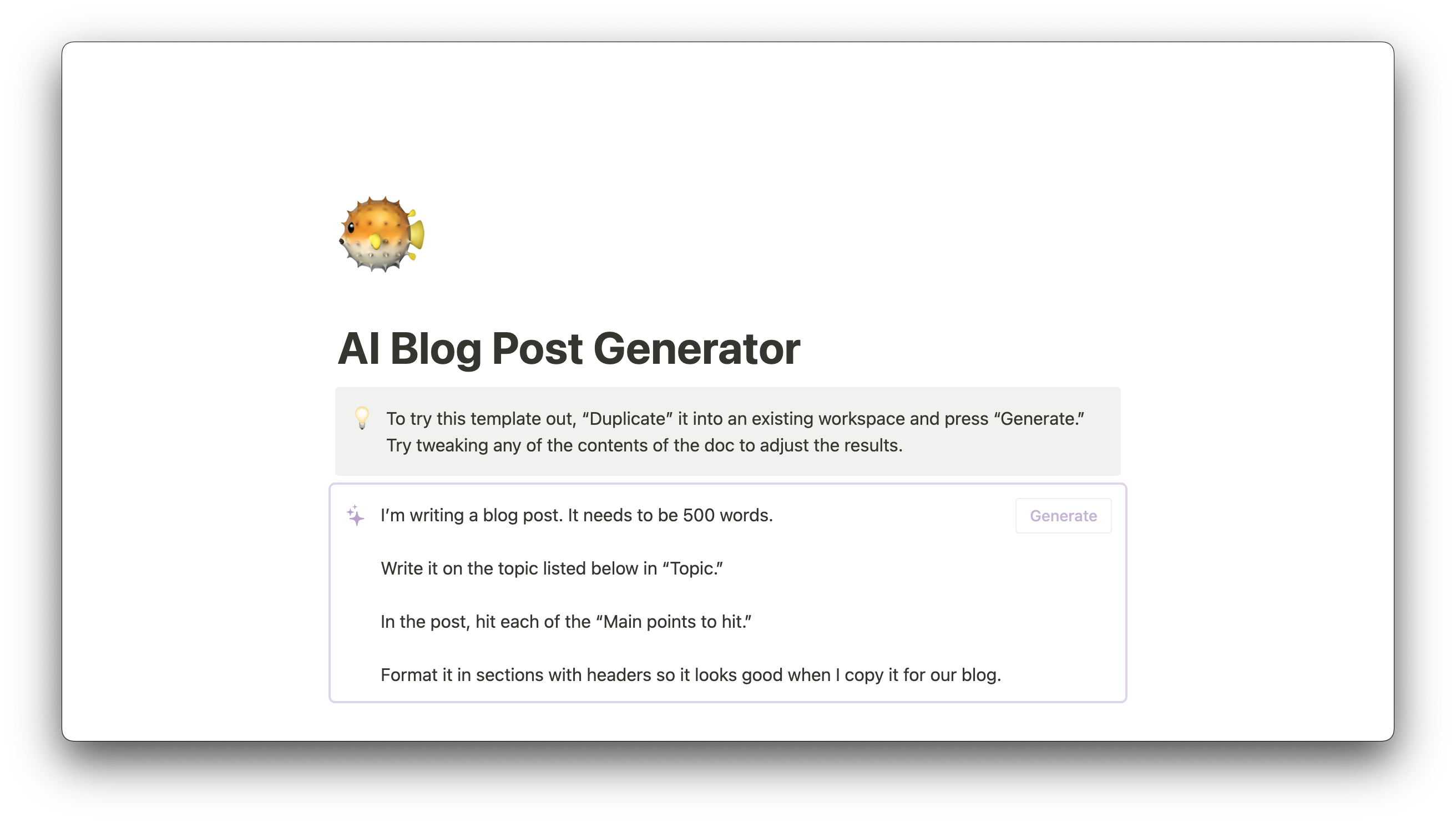You’re a talented developer who creates apps from scratch, a marketing buff who engages every audience, a graphic designer with a unique aesthetic vision. But you’re not a writer — and that’s okay.
While you might not be a grammar and style expert who’s passionate about the pen, even if writing isn’t in your wheelhouse, you can still create an excellent email or compelling copy. You just need a push in the right direction.
Artificial intelligence (AI) writing tools provide that push, offering the inspiration and finesse you need to combat writer’s block and perfect a piece. Enhance your writing with AI, and add “wordsmith” to your already formidable deck of skills.
What are AI writing tools?
AI writing tools generate copy and improve writing based on user prompts. You might input a paragraph into an AI writing tool asking it to pinpoint instances of passive voice, for example. It will then list each instance. Or you could ask for 10 email snippet suggestions for an email campaign, giving the tool enough information to offer an insightful response.
To offer good quality and human-like responses, these tools analyze large quantities of data, which dictates their impressions of what a good answer would be. Much of this data is accessed via web content, though, meaning AI writing tools don’t always provide accurate and ethical responses. Always audit the content you use from these platforms to ensure that it’s correct and aligns with your values.
How can AI improve your writing?
Chances are you’re familiar with your word processor’s spellchecker. When you skip or misspell a word, this tool automatically fixes the error, or gives you the option to do so. AI writing tools work the same way, just with much more power behind them. AI tools can improve your copywriting by offering suggestions on the following:
Grammar — they can correct grammar mistakes you may not recognize or catch. While it may be common to hear a sentence like, “There were less people at the meeting this week,” that grammar is off, and an AI tool would likely catch it, correcting the sentence to read “fewer people.”
Clarity — AI tools can recommend more precise sentences that cut out unnecessary descriptors and wordy syntax. An AI writing assistant might suggest “the company’s vision” instead of the clunkier and repetitive “the vision and dreams of the company.”
Tone — these tools can understand a piece's style and recommend staying in a formal or friendly voice. An AI writing helper might flag academic language in an informal email and recommend a change, like switching out “facile” for “easy” or “simple.”
Structure — a well-written document that doesn’t follow a logical structure can lose the reader. AI tools can suggest an outline that supports your ideas and encourages a logical flow of ideas.
What to write next — an AI writing assistant can finish your sentences, write a first draft of an email, and summarize meeting notes or audio clips. If a teammate talks freely for 2–3 minutes about an upcoming development project, an AI tool can write down a salient point like, “The team will begin development on a wellness app next week.”
The benefits of using an AI writing assistant
AI writing tools are here to serve. They exist to help users improve their writing and, as such, are inherently beneficial tools. And AI writing software programs don’t just save you from an embarrassing typo. They also:
Save you time — if you’ve read an important email 10 times before sending it, you know that editing for spelling and grammar is tedious, time-consuming, and stressful. An AI writing tool provides the proverbial extra set of eyes. After you and the AI assistant read the text once, it’s likely clean and ready to share.
Help you learn — if an AI writing tool makes a similar suggestion a few times, you’ll probably learn to avoid that mistake in the future. And because AI assistants assess more than grammar and spelling, these recommendations can make you a stronger writer. If your tool is constantly cutting down wordy sentences, you know you need to keep an eye out for extra verbiage, repeated information, and filler text. Changing your wordy ways sharpens your content writing skills.
Keeps content consistent — an AI tool can quickly scan a document for style inconsistencies. If you consistently use contractions like “can’t” in a text and write “cannot” in a single instance, the tool may flag this word as outside the document’s style.
The drawbacks of AI writing assistance
While AI tools have a lot to offer, take the benefits with a grain of salt. An AI assistant’s “brain” is knowledgeable, but can’t provide that human touch that brings relatability and life to a text.
Remember that AI writing tools only offer suggestions — it’s up to you whether or not to take them. Keeping that fact in mind helps you establish a healthy balance between relying on AI and making your own calls.
Here are a few drawbacks to be aware of:
Your AI tool’s voice may not be yours — an AI assistant may write sentences or suggest word replacements you’d never come up with. Using manufactured language may make a reader mistrust the content, thinking that the text doesn’t sound like you. If you write a down-to-earth blog with quippy references and nods to pop culture and then let an AI tool create a post for you, you’ll likely find the AI-generated sentences dry and off-brand. In this case you might want to use AI to create an outline and check your grammar, doing the writing yourself.
AI assistants can err, too — these tools may store a wealth of grammar and style knowledge, but sometimes “by the book” recommendations are incorrect. An AI writing tool might notice you use the word “hot” frequently and suggest you replace “hot” with “warm.” But if the sentence you're writing has to do with “hot new items,” the AI tool’s suggestion for “warm” doesn’t align with the text’s intention. Take the AI assistant’s tip on using less repetitive language and make adequate substitutions yourself.
You can become too dependent — you won’t always have access to AI tools. If the AI writing assistant you use doesn’t integrate with your email provider, you’ll have to draft texts on your own or copy-paste them to and from the AI tool. And the latter may take more effort than simply writing an email yourself.
How to use AI to improve your writing: 3 tips
Here are a few ways to leverage this technology’s greatest strengths and become a stronger writer.
1. Brainstorm better
Even the most talented writers burn out and run short of content ideas. Let AI suggest the subject matter for your next blog post or social media campaign. Or enter a prompt into the AI tool and see if your text could benefit from a fresh outline or content angle.
2. Shake up your copywriting
You have a style and voice that represent you, but there’s always room to grow. Perhaps your article intros and conclusions are repetitive, or you always stick to the same vocabulary. If a suggestion fits your text and expands your word variety or provides a new angle for a paragraph, take it.
3. Become more confident
Some AI writing tools will explain why a choice you’re making is incorrect, and knowledge is power. You can retrain your brain to avoid making this mistake in the future while understanding why it’s wrong and being able to confidently explain the grammar rule to others.
Improve your writing with Notion AI
The best AI content generator is the one you can learn from and work with. Let Notion AI power up your projects, teaching you how to generate better copy and helping you brainstorm social media bios or blog posts.
And Notion does a lot more than copy generation. It’s a comprehensive and central team workspace that offers task planning tools and shared docs databases. Get started today.






